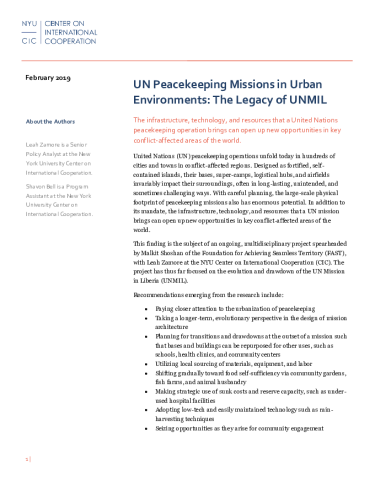The infrastructure, technology, and resources that a United Nations peacekeeping operation brings can open up new opportunities in key conflict-affected areas of the world.
United Nations (UN) peacekeeping operations unfold today in hundreds of cities and towns in conflict-affected regions. Designed as fortified, self-contained islands, their bases, super-camps, logistical hubs, and airfields invariably impact their surroundings, often in long-lasting, unintended, and sometimes challenging ways. With careful planning, the large-scale physical footprint of peacekeeping missions also has enormous potential. In addition to its mandate, the infrastructure, technology, and resources that a UN mission brings can open up new opportunities in key conflict-affected areas of the world.
This finding is the subject of an ongoing, multidisciplinary project spearheaded by Malkit Shoshan of the Foundation for Achieving Seamless Territory (FAST), with Leah Zamore at the NYU Center on International Cooperation (CIC). The project has thus far focused on the evolution and drawdown of the UN Mission in Liberia (UNMIL).
